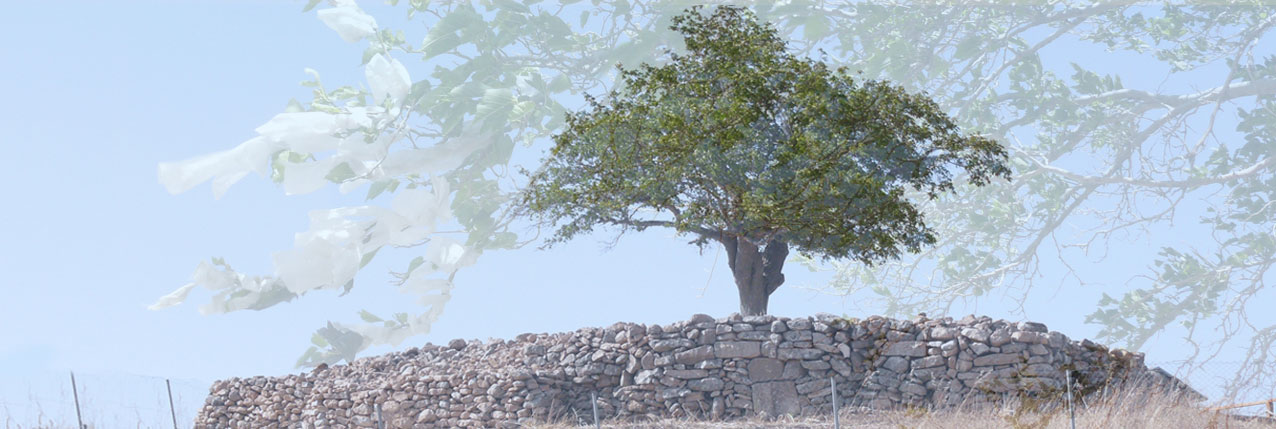Atop the hill that has now become known to the world as Göbekli Tepe, in Southeastern Turkey, lives a Mulberry Tree. There are graves near its roots that people visit, making it, for that reason alone, a sacred location. It is also hallowed ground to many, for the hill has revealed one of the oldest archaeological sites on Earth, dated to before the end of the last ice age

When people visit the site and reflect on its profundity, they often do so from the vantage point of this blessed little tree. Furthermore, a local tradition is (or was) to tie ribbons to its branches, ribbons that represent the innermost wishes of the visitors. And so we reveal our wishes to you here.
Our first wish is for general financial backing. We are working to produce an educational documentary and are appreciative of the many people who have donated to it so far (please see our homepage for a trailer we made). However, we currently do not have the funds necessary to complete its production. If you would like to donate to the project, please either contact us directly or use the Donate button below. We thank you in advance for your kind consideration and support.
Once our documentary is completed and released, we hope to conduct conferences and resume our educational tours (offering “free” or “work” passes to qualifying students in both instances). However, this too takes a financial foundation, so we are back to square one: needing philanthropic support.
With a financial base from which to operate established, our top research projects would be:

The Chamber beneath the Left Paw of the Great Sphinx: This artificial chamber was detected seismically in the early 1990s by Dr. Schoch, working with his colleagues Dr. Thomas Dobecki and the late John Anthony West. Ancient hieroglyphic evidence suggests that this chamber was an archive that dates back to well before dynastic times, and may go back to the time period that dynastic Egyptians referred to as Zep Tepi, the “first time”, or the time of an earlier cycle of civilization corresponding to the period of Göbekli Tepe, circa 12,000 years ago. (This type of project requires funding in the seven figures.)

The Basalt Moai of Easter Island. Most of the moai (the huge heads and torsos so iconic of Easter Island) are made from a stone composed of congealed volcanic ash, commonly known as volcanic tuff. However, a few are carved from very hard basalt, but the basalt quarries have never been found. Dr. Schoch, ORACUL’s Research Director (who holds a Ph.D. in geology and geophysics from Yale), speculates that the basalt quarries are under water, off the coast of Easter Island. If this can be demonstrated by locating them below the current sea level, it would mean that the oldest moai were carved prior to the rises in sea level that occurred at the end of the last ice age. This finding alone would again rewrite the history of civilization – just as both the discovery of Göbekli Tepe and the demonstration of significant water-weathering on the Sphinx did.
Aside from work (and dreams), at the moment ORACUL has little. Its “team” is comprised of a few volunteers who give enormous amounts of time to building the organization because they believe it has the potential to grow into something impactful. We hope to develop the organization into a major presence, with a physical office, including a research library, museum, and archive. Indeed, members of our community have contacted us regarding bequeathment of their private collections of rare books and artifacts. To this end, an edifice is needed – and this may be our biggest (perhaps wildest) wish: a place to call home.
Thank you for any help you can lend toward making ORACUL’s dreams come true.
